Q
how to change tires toyota vios
To change a tire on a Toyota Vios, first prepare tools such as a jack and a wrench. Park the car and engage the handbrake, then place a warning sign behind the vehicle. Use the jack to lift the car until the tire is off the ground. Loosen the tire bolts with the wrench, following a diagonal sequence. After removing the bolts, take off the tire. When installing the new tire, align it with the bolt holes and install the bolts, tightening them gradually in a diagonal sequence. Finally, lower the jack. Ensure that the bolts are tightened with moderate force, neither too tight nor too loose.
Special Disclaimer: This content is published by users and does not represent the views or position of PCauto.
Related Q&A
Q
What Segment is Toyota Vios?
The Toyota Vios is a Class B sedan (also known as a subcompact car or entry - level compact sedan) in the Malaysian market. It belongs to the same niche market as models like the Honda City and Nissan Almera. Its body size and powertrain configuration (a 1.5L naturally aspirated engine) are in line with the positioning of this class, making it suitable for urban commuting and daily family use.
In Malaysia, the Vios has long been among the top - selling cars, thanks to the reliability of the Toyota brand, low maintenance costs, and practical features (such as seven airbags and LED headlights). It is especially popular among consumers with limited budgets who value durability.
It's worth noting that Class B sedans are highly popular in the Southeast Asian market. These models offer a good balance between fuel economy and agility. Moreover, the Completely Knocked Down (CKD) local assembly mode makes their prices more competitive. The facelifted versions of the Vios usually optimize the suspension system according to local road conditions and add features that cater to local preferences, such as an air - conditioning system more resistant to high temperatures. These detailed designs further strengthen its market advantage.
When considering cars in the same class, consumers can also pay attention to differentiating factors such as power performance, rear - seat space, and warranty policies.
Q
What is the Reslae Value of Toyota Vios?
The Toyota Vios has shown excellent performance in terms of depreciation value in the Malaysian used car market. This is due to its reliable quality, low maintenance costs, and wide market recognition. Depending on the vehicle age and condition, a 3 - year - old Vios can usually retain 60% - 70% of its original price, while a 5 - year - old one can retain about 50% - 60%. Factors affecting its residual value include regular maintenance records, mileage, body condition, and whether the parts are original. It's worth noting that the depreciation value of the entry - level J model is usually slightly lower than that of the high - end versions because consumers prefer additional configurations. In addition, the depreciation value of its competitors in the same class, such as the Honda City, is similar to that of the Vios. However, the Vios has more advantages in long - term use thanks to its lower repair costs. It is recommended that car owners keep complete maintenance records and avoid excessive modification, which can significantly increase the resale value. For consumers planning to buy a used Vios, it is advisable to purchase through formal channels and carefully check the condition of the engine and transmission. At the same time, compare the price differences of different years and versions to make a wiser choice.
Q
How Many CC is Toyota Vios?
The Toyota Vios is a very popular B-segment sedan in the Malaysian market. The currently available fourth-generation model (2023 version) is equipped with a 1.5-liter naturally aspirated engine with a specific displacement of 1496 cc (cubic centimeters). It has a maximum power of 107 horsepower and a peak torque of 140 Nm, paired with a CVT gearbox. This engine is well - known for its durability and fuel economy.
In the Malaysian market, the Vios comes in four versions: J, E, G, and TRD Sportivo, which can meet the needs of different consumers. For readers who want to know about car displacement, cc (cubic centimeters) is a unit used to measure engine displacement. Generally, a larger number means stronger power, but it may also result in higher fuel consumption. The 1.5L displacement of the Vios strikes a good balance between power and fuel efficiency, making it very suitable for city driving.
Moreover, the Vios is also equipped with Toyota Safety Sense, an active safety system that includes functions such as pre - collision warning and lane departure warning, which further enhance driving safety. These features are quite competitive among models in the same class.
Q
What is the Engine in Toyota Vios?
Currently, the Toyota Vios available in the Malaysian market is mainly equipped with a 1.5 - liter four - cylinder naturally aspirated engine, model 2NR - FE. This engine adopts the Dual VVT - i (Dual Variable Valve Timing - intelligent) technology. It has a maximum power output of 106 horsepower and a peak torque of 138 Nm. It can be paired with either a CVT (Continuously Variable Transmission) or a 5 - speed manual transmission. The overall power performance of this setup is smooth and fuel - efficient, making it extremely suitable for city driving.
This engine has been well - proven in the Malaysian market over a long period. It is highly reliable and comes with relatively affordable maintenance costs, which makes it the first choice for many family users. It's worth noting that although the power output of a naturally aspirated engine is not as strong as that of a turbocharged engine, its simple and durable structure makes it easier to maintain. It is well - suited for Malaysia's hot and rainy climate.
For consumers with a limited budget who still want to own a reliable Japanese - made car, the powertrain of the Vios is a great option. Additionally, Toyota has a well - established after - sales service network and sufficient parts supply in Malaysia, which further reduces the cost of car ownership.
Q
What is the Gearbox Type of Toyota Vios?
The transmission types of the Toyota Vios vary depending on the model year and configuration. Currently, there are mainly two options available in the Malaysian market, namely the CVT (Continuously Variable Transmission) and the traditional 4 - speed automatic transmission. The CVT is popular for its smooth shifting experience and high fuel economy, while the 4 - speed automatic transmission has the advantages of simple structure and low maintenance costs, making it suitable for consumers with limited budgets. For Malaysian users who pursue driving comfort and fuel efficiency, the CVT version is a more ideal choice, especially performing better in congested city traffic. It's worth mentioning that CVT technology has been widely used in Toyota models in recent years. It enhances driving pleasure by simulating gear - shifting steps while maintaining the economy of a continuously variable transmission. When purchasing, it is recommended to make a choice based on personal driving habits and budget. You can also visit local Toyota dealers to test - drive different transmission versions of the Vios and experience the differences between them personally. No matter which transmission you choose, regular maintenance is the key to ensuring long - term reliable use. It's very important to follow the manufacturer's recommended cycle for changing the transmission fluid.
Q
What is the PCD Size of Toyota Vios?
The PCD (Pitch Circle Diameter) of the Toyota Vios is 4x100, which means its wheel hub has 4 bolt holes, and the centers of these holes are distributed on a circle with a diameter of 100 millimeters. This specification is quite common among compact cars and is suitable for 15 - 16 - inch wheels. For Malaysian car owners, it's extremely important to know the PCD size. When replacing wheels or upgrading tires, you must ensure that the PCD of the new wheels is the same as the original one. Otherwise, it may lead to installation mismatches or potential driving safety hazards.
Apart from the PCD, when choosing wheels, you also need to pay attention to the center bore diameter (CB) and the offset (ET). These parameters together determine whether the wheels are compatible with the vehicle. Since Malaysia has a rainy climate, it is recommended that car owners choose reliable - quality wheels and tires to ensure grip and stability on wet roads. At the same time, regularly check the tightness of the wheel bolts to avoid loosening.
If you're unsure about modifications, it's best to consult a professional technician or refer to Toyota's official recommendations to ensure a balance between driving safety and performance.
Q
Does Toyota Vios Have Apple Carplay?
The latest models of the Toyota Vios in the Malaysian market are indeed equipped with Apple CarPlay. This allows iPhone users to more conveniently use apps such as navigation, music, and calls through the in - car screen, enhancing the driving experience. However, the specific configuration may vary depending on the model year and version. It is recommended to confirm the detailed information with the dealer before purchasing a car.
In addition to Apple CarPlay, the Vios also supports Android Auto, offering wide compatibility and suiting a variety of smartphone users. In recent years, many automotive brands have added smart connectivity features to their new cars. For example, the Honda City and Nissan Almera also offer similar technologies, reflecting the automotive industry's emphasis on digital demands.
If you have higher requirements for the in - car connectivity system, you can also learn about Toyota's T - Connect service, which integrates more remote control and vehicle management functions. In Malaysia's hot and rainy climate, the Vios' durability and low maintenance cost have always been one of the reasons for its popularity, and the newly added technological configurations further enhance its market competitiveness.
Q
What is the Tyre Brand of Toyota Vios?
The tire brands originally equipped on Toyota Vios in the Malaysian market may vary depending on the model year and configuration. Common pairings include international brands such as Bridgestone, Dunlop, or Yokohama. These brands are known for their wear resistance and performance in wet conditions, making them suitable for the local rainy climate. For example, the Bridgestone ECOPIA series fitted on some Vios models focuses on energy efficiency and noise reduction, while the Dunlop ENASAVE emphasizes the balance between environmental friendliness and grip.
If vehicle owners need to replace their tires, in addition to the models recommended by the factory, they can also consider options like Michelin PRIMACY 4 or Goodyear ASSURANCE, which offer both comfort and safety. However, it's crucial to ensure that the tire size matches the original specifications (e.g., 195/50 R16).
The hot and rainy road conditions in Malaysia place high demands on the tire rubber and drainage capacity. It is recommended to check the tire tread depth (the legal minimum is 1.6 mm) every two years or 40,000 kilometers and perform regular tire rotations to extend their service life. Meanwhile, choosing tires with the “M+S” (mud and snow) marking can better handle unexpected weather conditions.
Q
Is Toyota Vios a Good Car? Learn the Pros and Cons Here
As one of the most popular Class B sedans in the Malaysian market, the Toyota Vios is truly a choice worth considering. Its advantages include reliable quality, low maintenance costs, and excellent fuel economy, making it very suitable for daily commuting and family use. The 1.5L Dual VVT - i engine it is equipped with provides smooth power, and paired with a CVT transmission, it performs excellently in city driving. Meanwhile, Toyota's after - sales service network covers the whole of Malaysia, offering high convenience for maintenance. The interior space is also spacious enough to meet the needs of local families.
However, it has its drawbacks. The sound insulation is mediocre, and road noise is quite obvious when driving at high speeds. The interior is mainly made of hard plastics, and its texture is not as good as some of its competitors in the same class. Also, the technological features are relatively conservative, lacking advanced driving assistance systems. If your budget allows, you can consider adding sound insulation to improve comfort. In addition, the Vios has an extremely high resale value, resulting in lower long - term ownership costs. It is a very practical choice for Malaysian consumers who value practicality and reliability. In the same class, you can also refer to models like the Honda City or Proton X50 for comparison.
Q
What is the Width of Toyota Vios?
The body width of the Toyota Vios is 1,740 millimeters. This dimension is at a moderate level among B - class sedans. It can not only meet the flexibility requirements for city driving but also provide a comfortable seating space. For Malaysian consumers, the width design of the Vios is very suitable for local road conditions. It is relatively easy to handle, especially on narrow streets or in crowded parking lots.
In addition, the body width also affects the vehicle's stability. A wider wheelbase helps to improve the grip during high - speed driving. It's worth mentioning that when choosing a vehicle model, besides the width, parameters such as the wheelbase and ground clearance also need to be considered, as these can all affect the driving experience.
The Toyota Vios has always been known for its durability and low fuel consumption in the Southeast Asian market. Its body size design fully takes into account the needs of users in tropical regions, such as having good air - conditioning efficiency and ventilation design. If you often need to carry family members or friends, the rear - seat space of the Vios is sufficient for daily use. However, it is recommended to take a test drive at the showroom to confirm whether it meets your personal needs.
Latest Q&A
Q
What is the Engine Oil Capacity of Toyota Harrier ?
The engine oil capacity of the Toyota Harrier varies depending on the model year and engine type. For example, the common 2.0-liter turbocharged engine (8AR FTS) typically requires about 5.7 liters of oil when including the oil filter. Meanwhile, the 2.5-liter hybrid version (A25A FXS) generally needs around 4.8 liters. However, the exact amount should always be determined using the dipstick to avoid overfilling or underfilling.
In Malaysia’s hot climate, it is recommended to use fully synthetic engine oil that meets Toyota’s SN or SP-grade standards, such as 5W30 or 0W20. These oils are better suited for high temperatures and can help extend engine life. It is essential to check the oil condition regularly, ideally every 5,000 kilometers or six months. If the oil appears dark or has lost its viscosity, it should be changed promptly.
Some newer Harrier models may come with an oil life monitoring system, but it is still advisable for owners to manually inspect the oil level and condition to ensure accuracy. The most reliable reference remains the original maintenance manual, which provides the precise oil capacity and recommended specifications for each specific model.
Q
What is the Road Tax Price of Toyota Harrier? How to Calculate it?
In Malaysia, the road tax price of the Toyota Harrier is calculated based on its engine capacity. The specific cost depends on the vehicle's year and displacement. For example, the annual road tax for the 2.0L version is about RM380, while that for the 2.5L hybrid version is about RM1,140. The actual amount may be slightly adjusted according to the state. When calculating the road tax, you need to refer to the JPJ's rate table. The formula is the basic rate multiplied by the engine capacity (in liters). Meanwhile, hybrid models enjoy some tax incentives.
Apart from the road tax, car owners also need to understand the importance of vehicle insurance and regular maintenance. Insurance costs usually depend on the car price, car age, and insurance coverage. Regular maintenance can ensure the vehicle's performance and extend its service life.
Malaysia's automobile tax system also includes import duties and sales taxes. These costs are already included in the total price when purchasing the car. Therefore, car owners only need to renew the road tax and insurance annually to legally drive on the road.
Q
What is the Width of Toyota Harrier?
The body width of the Toyota Harrier is 1,890 millimeters, making it one of the wider designs among SUVs in its class. This allows for generous lateral space inside the cabin, enhancing passenger comfort, especially for Malaysian families during long-distance travel. The Harrier's wide body also contributes to greater driving stability. Together with its streamlined shape, it reduces wind resistance and improves fuel efficiency.
The broader body also enables a more flexible interior layout. For example, the rear seats can be reclined, and the trunk offers a generous 487 liters of space, which expands to 1,278 liters when the seats are folded down. This makes it ideal for weekend getaways or shopping trips, both popular activities among Malaysian drivers.
Although the Harrier’s width slightly exceeds 1.8 meters, it still fits comfortably into standard Malaysian parking spaces, which are typically around 2.5 meters wide. Daily use remains convenient. The vehicle’s dimensions strike a strong balance between spacious practicality and agile handling. Built on the TNGA-K platform, the Harrier features enhanced chassis rigidity. This solid foundation ensures the wide body maintains precise steering control even through curves, making it well suited to Malaysia’s diverse road conditions, from mountainous terrain to city streets.
Q
Is Toyota Harrier a Good Car? Learn the Pros and Cons Here!
The Toyota Harrier is a popular SUV in the Malaysian market. Its advantages include a spacious and comfortable interior, excellent fuel economy, and the reliable quality that Toyota is known for. It's especially suitable for family use or long-distance driving. The 2.0L and 2.5L hybrid versions offer diverse power options to meet different driving needs. The hybrid versions are particularly fuel-efficient when driving in the city, making them a great fit for the common congested traffic conditions in Malaysia.
In addition, the Harrier comes with comprehensive safety features. The Toyota Safety Sense system is standard, which includes functions like pre-collision warning and lane-keeping assist, enhancing driving safety.
However, the Harrier has its drawbacks. Its price is relatively high, especially for the hybrid versions, and the maintenance costs are slightly higher than some of its competitors in the same class. Also, the space in the third-row seats is rather cramped, not very suitable for adults on long-term rides.
For Malaysian consumers, if they have a sufficient budget and value brand reputation and fuel efficiency, the Harrier is a good choice. But if they are looking for better value for money or more spacious seven-seat accommodation, they can also consider other models in the same class. Overall, the Harrier offers a well-balanced performance in terms of quality, comfort, and technology, making it a worthy SUV to consider.
Q
What is the Tyre Brand of Toyota Harrier?
The factory-equipped tire brand on the Toyota Harrier in Malaysia varies by model year and trim level. Common OEM options include reputable international brands such as Bridgestone, Dunlop, and Yokohama which are all known for their durability and wet-weather performance, which are well-suited to Malaysia’s humid, rainy climate.
For example, the 2023 Harrier’s higher trims are often fitted with Bridgestone Alenza tires, which prioritize quietness and ride comfort. Entry-level models may come with more budget-friendly options such as the Dunlop PT3.
Harrier owners are advised to check tire pressure and tread depth regularly, especially ahead of the rainy season, to ensure optimal drainage and grip. When replacing tires, refer to the original specification (e.g., 235/55 R19). Alternatives such as the Michelin Primacy 4 or Continental UC6 are popular for their balanced performance in comfort and handling. However, mixing different tire brands on the same vehicle is not recommended, as it may affect driving dynamics.
Malaysia’s hot and wet climate can accelerate rubber aging. As a general guideline, tires should be inspected and possibly replaced every five years or 60,000 km. For vehicles parked for extended periods, avoid uneven pressure that could lead to flat spots or sidewall deformation.
View MoreRelated News
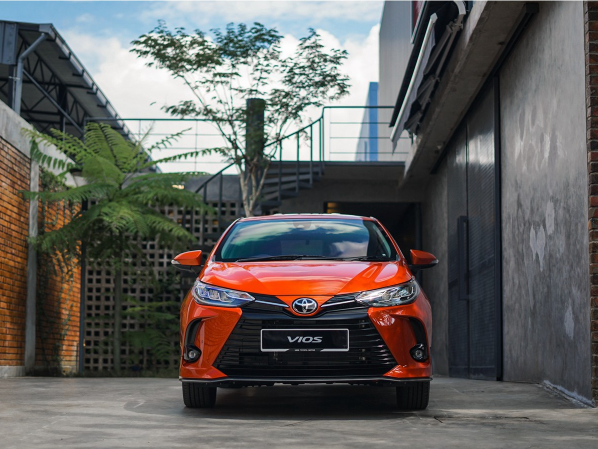
Toyota Vios Interior Design Revealed: A Balance of Functionality and Aesthetics
LienJul 18, 2025
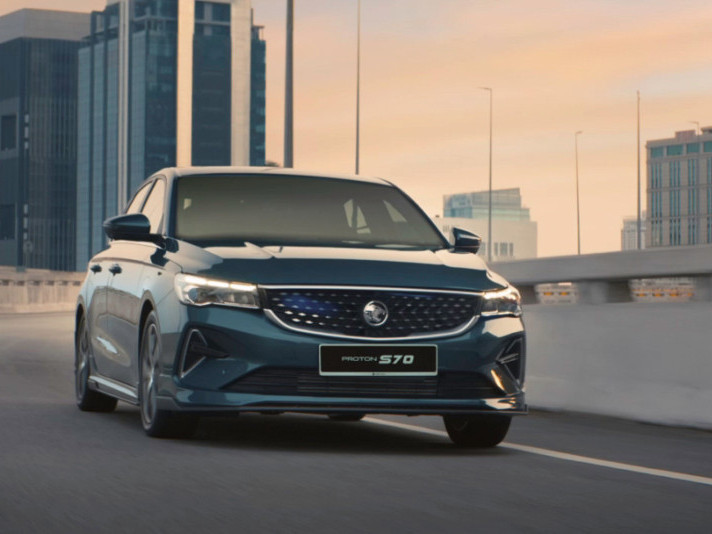
Proton S70 vs Honda City: The New Segment Leader?
LienJun 5, 2025
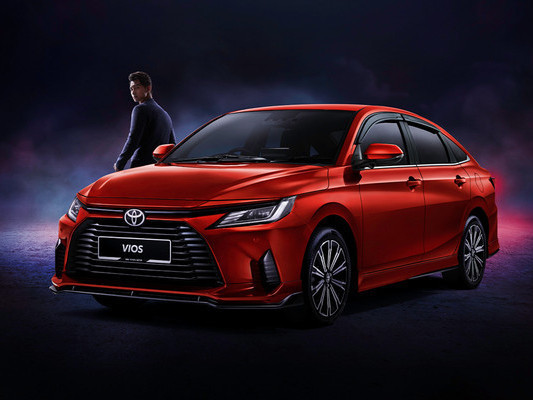
Toyota Vios : An In-Depth Buying Guide
LienMar 25, 2025
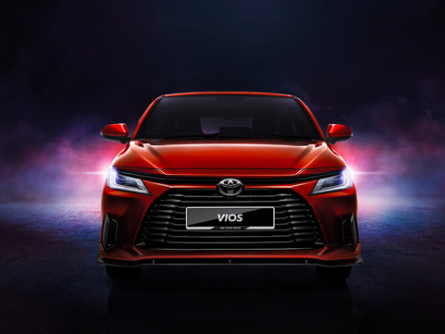
Toyota Vios: Selling price starts from RM 89,600, is it a Mini Camry?
LienMay 28, 2024

Toyota's Struggles with Digital Shift Delay Next-Gen EV Launch
LienJul 29, 2025
View More





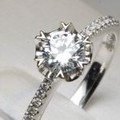






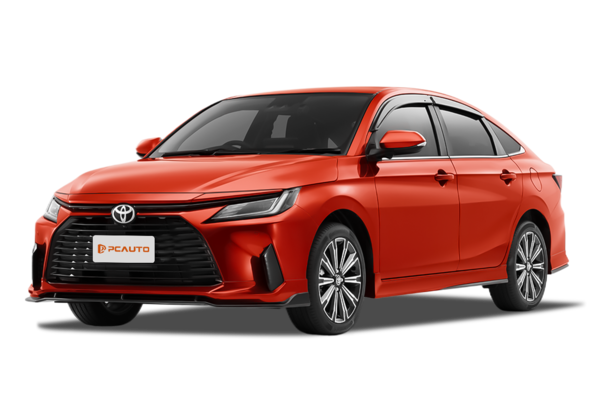





Pros
Cons